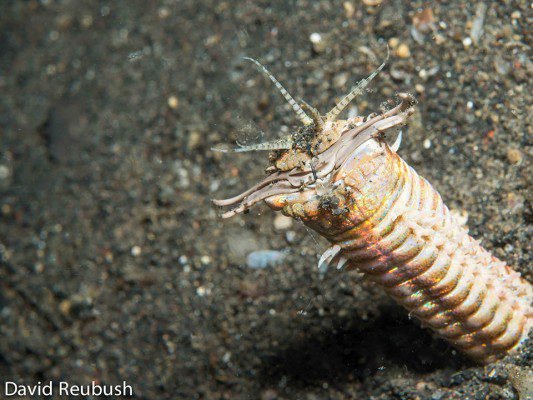
Just like a dog uses its nose to sniff out a scent, Bobbit worms have their own unique way of detecting food. Understanding how they hunt can give us insight into their role in the ecosystem and the remarkable adaptations that help them thrive. So, let’s dive deeper—pun intended—into the world of Bobbit worms and uncover the secrets behind their prey-sensing abilities.
What Are Bobbit Worms?
Bobbit worms, scientifically known as *Eunice aphroditois*, are marine polychaete worms that can grow up to 10 feet long. They live in burrows made in the sand on the ocean floor, often hidden from sight. With a body full of bristles and a head that resembles a lion’s mane, these worms are masters of camouflage. They blend into their surroundings, waiting patiently for unsuspecting prey to swim by.
These worms have a fearsome reputation. When they sense movement nearby, they can strike with lightning speed, using their sharp jaws to snag fish or shrimp. This predatory behavior makes them efficient hunters. But how do they know when it’s time to pounce?
How Do Bobbit Worms Sense Their Environment?
Bobbit worms rely on a combination of senses to navigate their watery world. Most importantly, they have sensitive structures that help them detect chemical cues in the water. Think of it like a chef tasting a dish and picking up on ingredients based on flavor. In the same way, these worms can sense different chemicals released by potential prey, which helps them identify when a meal is nearby.
Their body is equipped with specialized receptors that pick up on these chemicals. When a fish swims close, it releases substances into the water that alert the Bobbit worm of its presence. This ability to sense chemical changes is crucial for their survival.
Can Bobbit Worms Smell Prey Chemically?
Yes, Bobbit worms can indeed smell or sense prey chemically! They rely on a process called chemoreception, which allows them to pick up on specific chemical signals in the water. This is similar to how humans smell food cooking in the kitchen—it draws you in.
Bobbit worms use their antennae and other sensory organs to detect these chemical signals. When they sense the right mix of chemicals, it triggers their predatory instincts, and they’re ready to strike. It’s a smart adaptation that helps them locate food in the vast ocean.
The Role of Electroreception
In addition to chemical sensing, Bobbit worms also possess a lesser-known ability called electroreception. This means they can detect electrical fields created by the movements of other animals. So, if a fish is flapping its tail nearby, the Bobbit worm can “see” it without actually seeing it.
This combination of sensing methods makes Bobbit worms highly efficient predators. They can pick up on both chemical signals and electrical signals, which increases their chances of catching a meal. Imagine being able to “hear” the movement of prey even when you can’t see them!
Why Understanding Bobbit Worm Senses Matters
Understanding how Bobbit worms sense their environment is important for several reasons. For one, it gives us insight into the complexities of marine life and how different species adapt to their surroundings. Each creature has evolved unique methods for survival, and Bobbit worms are a fascinating example.
Moreover, studying these worms can help researchers understand ocean ecosystems better. Healthy ecosystems rely on predator-prey relationships, and knowing how these worms find their food can shed light on the overall health of marine environments.
Comparing Bobbit Worms to Other Marine Predators
When we think about predators in the ocean, sharks and octopuses often come to mind. But Bobbit worms are effective hunters in their own right. Unlike these larger predators, Bobbit worms have a more passive approach. They wait in their burrows, using their senses to detect prey rather than actively chasing them down.
Here’s a quick comparison of hunting strategies:
- Bobbit Worms: Ambush predators that wait for prey to come within reach.
- Sharks: Active hunters that rely on speed and agility.
- Octopuses: Highly intelligent with the ability to plan and ambush.
While all these predators have their own unique methods, Bobbit worms offer a different perspective on the art of hunting in the ocean.
Closing Thoughts
Bobbit worms are incredible creatures that demonstrate the diverse adaptations of marine life. Their ability to smell or sense prey chemically, combined with electroreception, makes them impressive hunters in their hidden world. By learning more about these fascinating worms, we can appreciate the complexity of ecosystems and the intricate relationships among ocean inhabitants.
So, next time you think about the ocean, don’t just picture the flashy fish or the majestic whales. Remember the Bobbit worm, waiting patiently for its next meal, relying on its remarkable senses to thrive in a vibrant underwater world.
